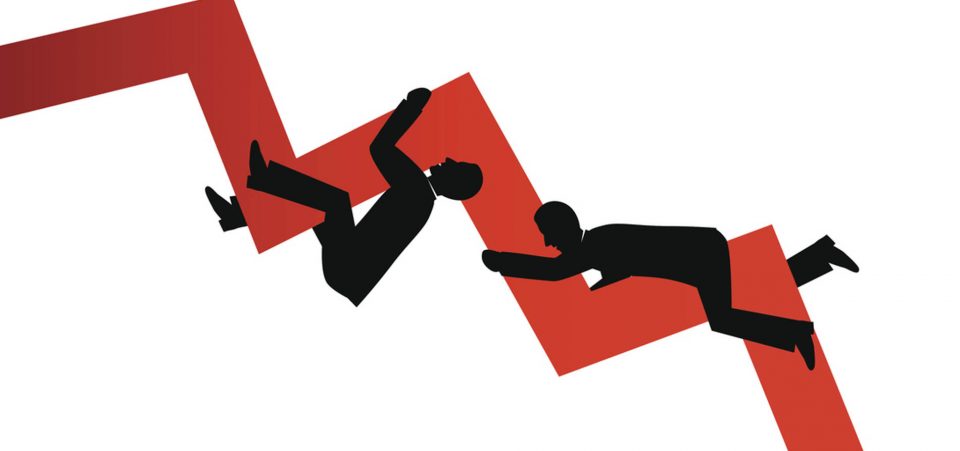Here’s Why U.S. Economy Could Enter into Recession in 2017
The U.S. economy is performing poorly. Truth be told, a recession seems a very likely scenario in 2017 for the U.S. economy, instead of robust growth.
If you are just paying attention to the Dow Jones Industrial Average (DJIA)—currently standing near the 20,000 level—and other indices like the NASDAQ Composite index at their all-time highs as an indicator of the U.S. economy, you could be making a big mistake.
Pay attention to how consumers in the U.S. economy are doing. Remember, U.S. gross domestic product (GDP) is roughly 70% consumption. If consumer spending declines, it takes a toll on the growth rate. A small decline in consumption could send the economy into a recession.
Here’s what the situation is: average Americans are struggling. They are not seeing much change in their living standards. This could have dire consequences, and could be one of the biggest factors that sends the U.S. economy into a recession.
Understand this: to this day, when stock markets give the illusion that the U.S. economy is roaring, there are about 44 million Americans who require the help of food stamps. (Source: “Supplemental Nutrition Assistance Program Participation and Costs,” United States Department of Agriculture, January 6, 2017.)
That’s roughly 14% of the entire U.S. population!
Mind you, back in 2009, when the financial crisis was at its peak, there were 33 million Americans using food stamps. In other words, food stamp usage in the U.S. has increased 33% since the great recession of 2007-2009.
Sadly, the misery just doesn’t end here.
Americans aren’t saving much. This is dangerous because you must question what happens if unemployment surges all of sudden. If individuals don’t have much savings, where will they get help from?
According to a survey by GoBankingRates, a financial services web site, in 2016, 69% of Americans had less than $1,000 in their bank accounts. In 2015, this figure was 62%. (Source: “69% of Americans Have Less Than $1,000 in Savings,” GoBankingRates, September 19, 2016.)
U.S. Economic Outlook 2017: Dire Growth Ahead
Looking at all this, I don’t know how one could say there’s economic growth in the U.S. economy.
Dear reader: keep in mind, the data sets I have shown you here are just few of many. If you want to know the real story about the U.S. economy, it’s important to look below the surface data. It’s screaming: “recession could be ahead!”
If a recession does become reality for the U.S. economy in 2017, understand that it will hurt investors’ confidence who have bought into the idea of growth. As I have said in these pages before, once they find that economic slowdown is real, and data proves it, they could be running for the exits very quickly. Massive losses could follow.






